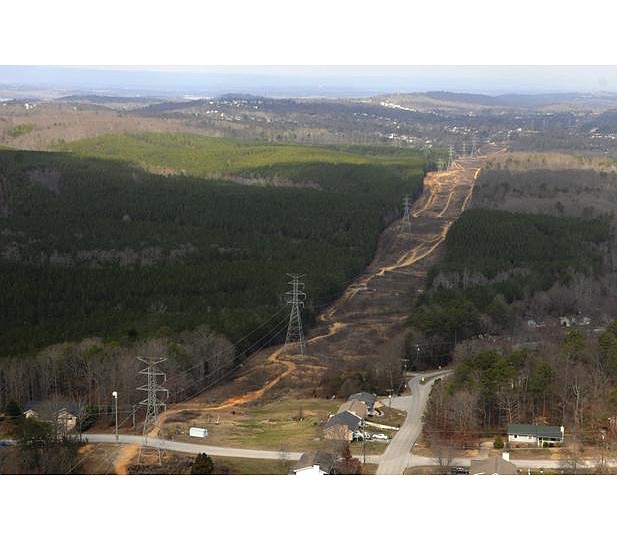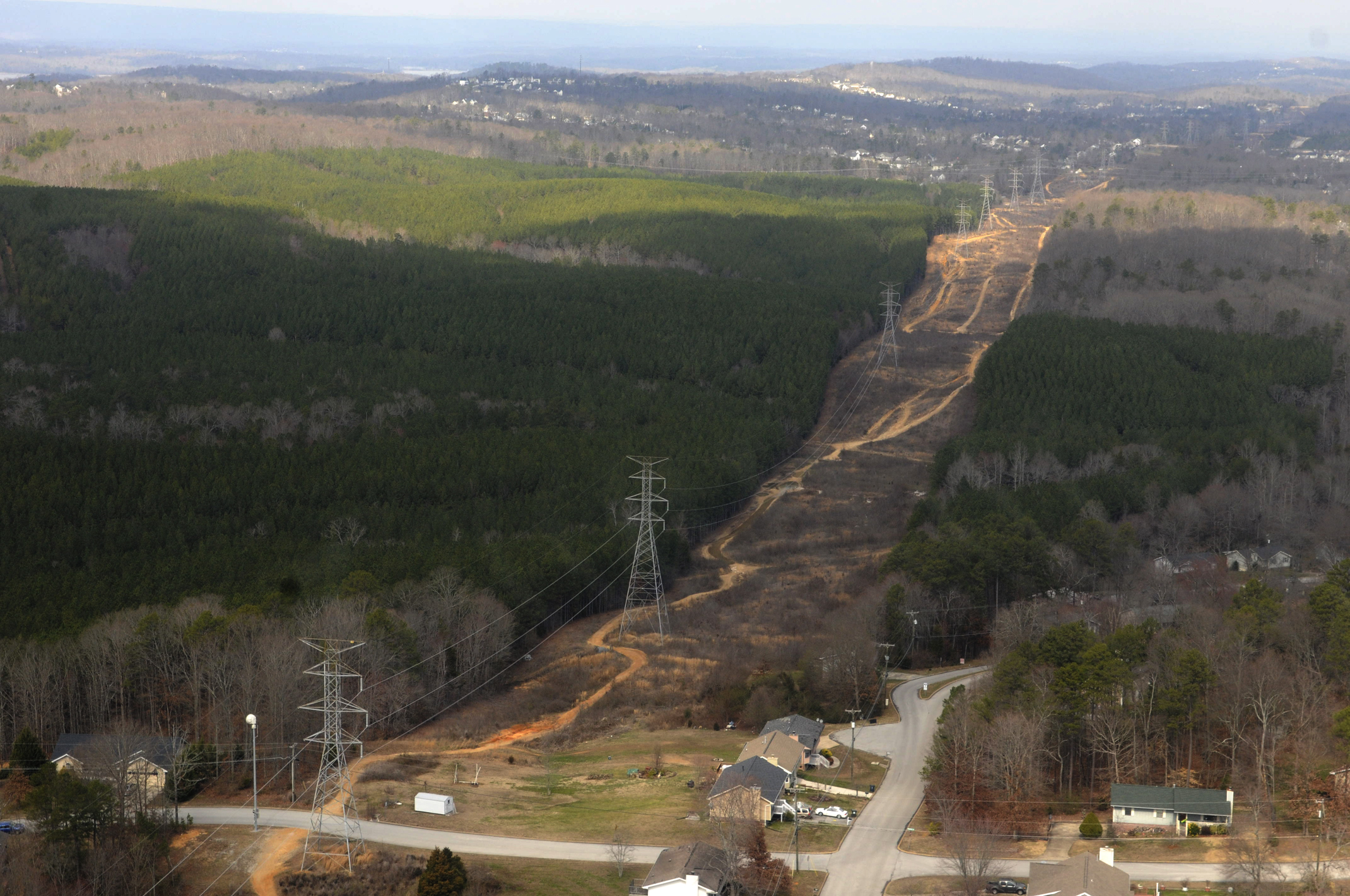TVA transmission network• 15,900 circuit miles of transmission line• 102,200 transmission line structures• 487 power stations and switchyards• 260,000 acres of transmission right-of-wayTVA power rights of way• Most transmission line rights are 75 feet to 200 feet wide• Below the power lines, only grasses an and non-woody plants are allowed• In the border areas near the power lines, no trees are allowed that might grow more than 15 feet in height• TVA mows and uses herbicides to control vegetation along its rights of way, usually on three to five-year cycles.
Anthony Billingsley had only been in his Stoney Brook Lane house for three months last year when he got a notice that some of the trees in his backyard near TVA's electricity transmission lines were scheduled to be cut down.
"I worked in the past for the [Electric] Power Board so I know about power easements, but I never expected them to have to remove 30- and 40-year-old, relatively small trees that weren't even under the power lines," Billingsley recalled Wednesday. "It was outrageous."
Billingsley, who so far has blocked any tree removal by joining a lawsuit challenging TVA's vegetation-control policy, is among thousands of property owners across the Tennessee Valley who own trees near TVA power lines that the utility plans to cut down. Tennessee Valley Authority officials said Wednesday the policy is designed to ensure the safety and reliability of its nearly 16,000 miles of transmission lines, which carry power to 9 million people in TVA's seven-state region.
"We're not against trees, but in most instances trees and transmission lines don't mix well," said Jason Regg, manager of line applied services for TVA in its eastern region. "We are trying to maintain the most reliable electricity system that we can, and for the safety of those living near power lines and to avoid unnecessary outages, we need to control the vegetation on our easements beneath and near our power lines."
TVA and other utilities have tightened those vegetation controls over the past decade since the 2003 blackout left 50 million Americans out of power. That blackout, which is estimated to have cost the U.S. economy $6 billion, was initially caused when a tree in Ohio fell on a power line. That outage quickly cascaded across the Midwest and Northeast.
TVA was cited and fined when it failed to trim a tree in a Alabama wetland and the tree tripped a transmission line in 2010. Although no customer service was ever interrupted, TVA agreed with regulators to upgrade its vegetation control. Regg said the agency now spends $25 million a year cutting trees and other vegetation to maintain its power line easements.
TVA mows and applies herbicides to control vegetation beneath its power lines. In bordering areas where trees might still fall and come in contact with power lines, TVA generally doesn't allow any tree to grow if it will exceed 15 feet in height on its property easements.
Sagging transmission lines can dip as low as 30 feet or less off the ground and hilly terrain nearby can cause some trees to come within enough distance to spark contact and cut power delivery, TVA spokesman Travis Brickey said.
Regg said TVA has cut the number of vegetation-caused power outages along its transmission lines significantly over the past two decades, but the utility still had 14 such occurrences last year. TVA has maintained 99.999 percent reliability of the electricity is delivers since 2000.
But critics of the tree-cutting policy argue TVA has gone too far in limiting trees not underneath the utility's power lines.
Larry Silverstein, a Knoxville attorney who has spoken out frequently against TVA's tree cutting policies, insists that the agency's approach "is not reasonable or necessary."
"TVA doesn't have unlimited rights to destroy people's property," he said.
But last week, U.S. District Court Judge Tom Varlan in Knoxville upheld TVA's policies and dismissed three claims against the utility. The judge left open the issue of whether TVA should have done an full environmental impact statement before implementing its stricter vegetation control plan. A trial on that dispute is set for July.
Don Vowell, a Knoxville attorney who filed the case, still questions why TVA is being more aggressive in cutting trees. He claims millions of trees on the 260,00 acres of TVA transmission easements could be destroyed by the policy.
"That's half the size of the Great Smoky Mountains and I'm afraid that is not only unsightly but also endangers many species," he said.
Regg said TVA complies with all environmental regulations and, in many instances, the cutting helps provide pasture and open fields for birds, deer and other wildlife.

